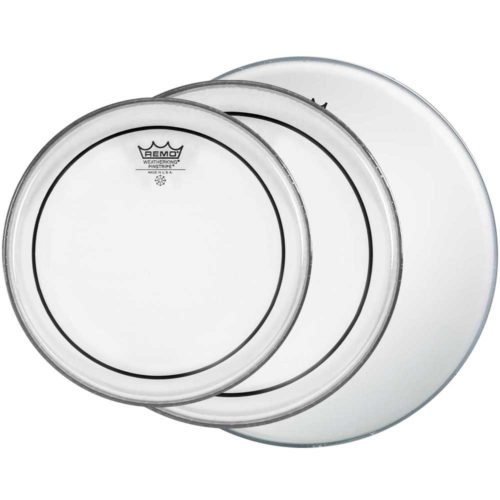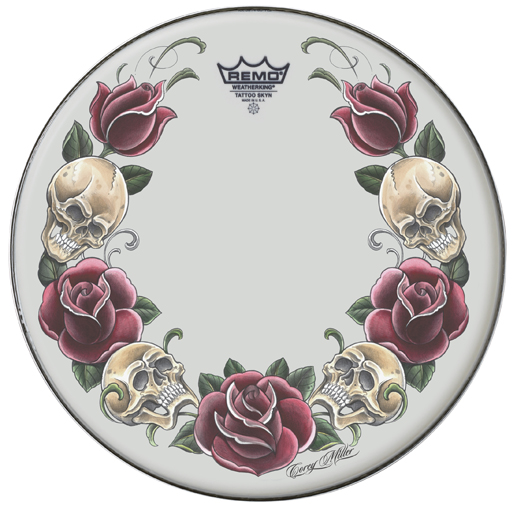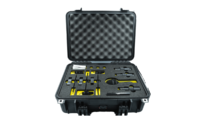Here is some knowledge, that every drummer should gain!
Elephant Drums school from London has posted a great guide to know your drum heads. It’s avery essential knowledge, but we think, that no matter how advanced drummer you are, you should know these thing below. Without an accurate skin, you won’t be able to sound good, or to give your music the right tone, and you will be hated by yourself, drumtech, sound engineer and every single one of your bandmates. These information are for you to enjoy drumming even more!
What is a drum skin made of?
Despite the word “skin” in the name, drum skins (also known as drumheads) are rarely made of animal skin. A synthetic material is almost always used for drum skins intended for the drum kit. The plastic skins are more durable, cheaper and more consistently reliable than animal skin. Aside from the obvious moral issues associated with using animal skin, it is a lot easier to make skins from plastics using modern manufacturing processes. Drum skins made of synthetic materials are the accepted standard product that you would find in any drum shop.
Batter Heads
The Batter Heads go on the side of the drum that you strike with the sticks. Resonant Heads go on the bottom of the drum (the drum skin which resonates). This section deals with the Batter Heads. If you have for example three biggest drum heads makers, such as Remo, Aquarian or Evans, they are dividing their products by three characteristics:
*Thickness
*Finishes and coatings
*Muffling
When we are talking about the thickness of a drum head, it’s very important to choose wisely. When choosing drum skins read the manufacturer’s descriptions about the properties of each particular type of drum skin. In very general terms, thinner skins tend to suit drummers who want a more lively/ringy sound, whereas thicker skins and two-ply heads tend to suit drummers who want to get a drier/thuddy sound.
The finish of the drum skin is not only an aesthetic choice. Whilst many drummers choose a drum skin for the way it looks, there are sonic characteristics that come with specific finishes. Coated or frosted finishes are said to add warmth to the tone of the heads, whereas uncoated heads tend to have more definition and attack. Coated batter heads also provide a texture that is ideal for brushes. You can find many drum heads, which are very artistic, and recognizable (check out Remo Tattoo Skyn)
Resonant skins
As mentioned before, the bottom drum skins are known as the resonant heads. This is the side of the drum that you don’t strike with the sticks. The skin resonates when the batter head is struck. Because this side of the drum is never struck most drummers never consider changing the bottom skins unless they get accidentally broken. Other drummers don’t think it matters what type of skin is on the resonant side. To some extent, it may be true that the resonant head will make little or no difference to the overall sound of the drums. This might be more true of cheaper entry-level drum kits. If you have a higher-spec drum kit the choice of resonant head will make more of a difference to the overall tone. The decision about whether to experiment with changing the resonant heads boils down to the quality of the drums themselves. For some kits it won’t make a great deal of difference. So before automatically splashing out on buying a whole new set of resonant heads, ask your drum teacher for advice about whether it would actually be necessary or if it is likely to make any noticeable difference.
How to put on new skins
It’s a basic procedure, and everybody knows how it should be done. But when you are changing the skin, you can also do a quick renovation of the shell, lugs and srubs! To put on a new drum skin, undo the lugs and remove the old skin. At this point it is a good idea to give the hoop and the bearing edge of the drum a good clean with a dry cloth. This removes any built-up dust, fluff, wood chippings and sawdust that have come off and got trapped. Also do a quick general maintenance check whilst you have the skin off the drum. Check there are no loose bolts or any bits of debris that might have got inside your drum. If necessary, use a small amount of petroleum jelly on the lugs to keep the screw threads in good condition. It is also a good time to replace any rusty or damaged lugs.
Source of information: https://www.elephantdrums.co.uk/
Websites of drum head makers
REMO: https://remo.com/
AQUARIAN: https://www.aquariandrumheads.com/
EVANS: https://www.evansdrumheads.com/
Share









